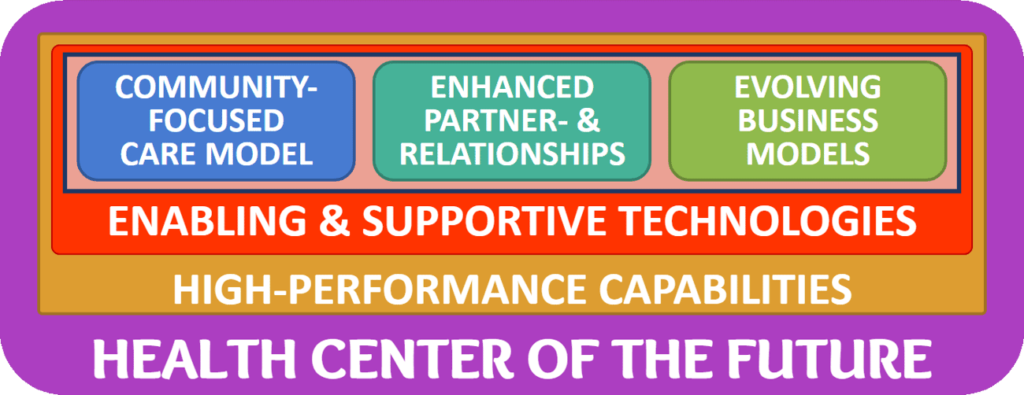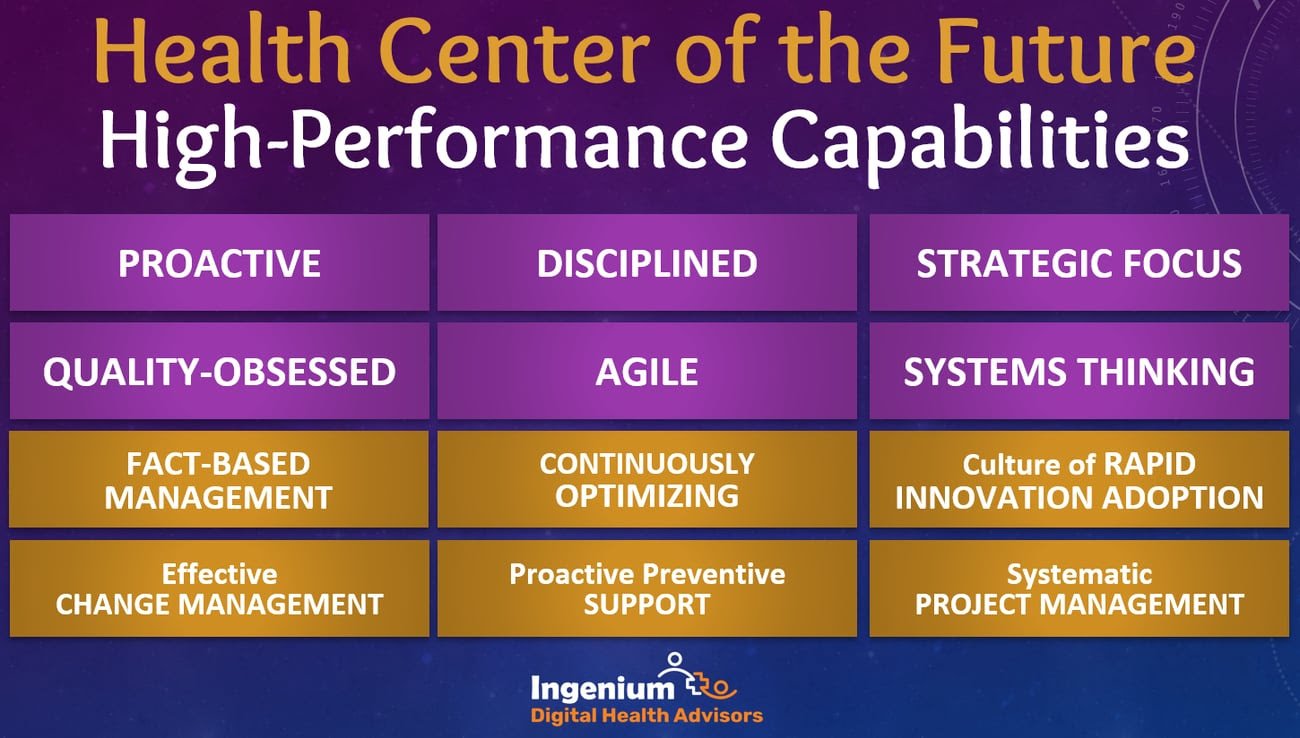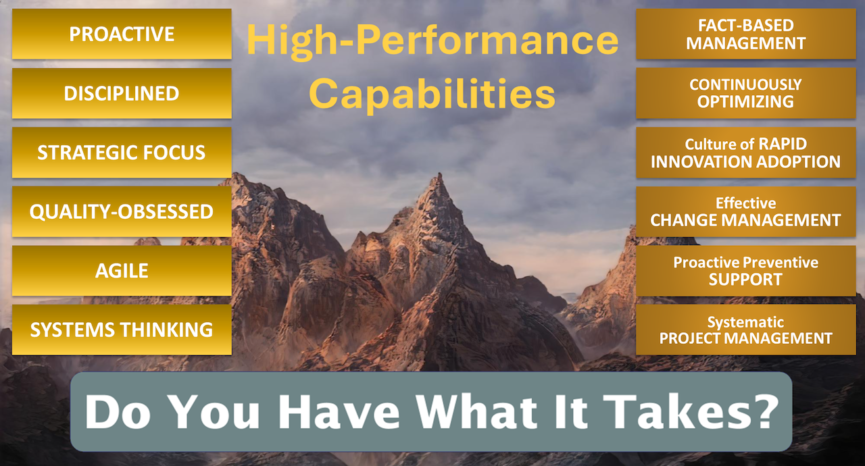Do You Have What It Takes?
Over the past several years, Christian Milaster and I have been working with a number of community health centers who are looking out past the immediate horizon. They seek to be well-prepared for the future. They are willing to evolve to be successful in meeting their community’s expanding needs.
In partnership with both the Mid-Atlantic Telehealth Resource Center (MATRC) and the National Association of Community Health Centers (NACHC), we have guided the design and dissemination of a framework for becoming a Health Center of the Future. In the coming months, NACHC will share additional educational and supportive resources for health centers in this endeavor.

This article is the third part in a series. Christian described the overall framework and then highlighted several of the enabling & supportive technologies.
I’ll focus here on the high-performance capabilities. These key building blocks sit at the base of the framework and are key to long-term success and resilience.
As depicted in the diagram below, the first six are high-performance leadership traits. The other six are high-performance organizational capabilities.
I will elaborate on a few of each.
Leadership characteristics, such as these, are often the difference between wild success and average performance:
Disciplined
The premier model for organizational excellence is still the Baldrige criteria for performance excellence. As Jim Collin’s described it: “I see the Baldrige process as a powerful set of mechanisms for disciplined people engaged in disciplined thought and taking disciplined action to create great organizations that produce exceptional results.”
Indeed, disciplined thinking, planning and execution are hallmarks of high-performance. Leaders who develop and hone the characteristic of discipline in themselves and their leadership teams are better poised to read shifts in their market, to methodically & rapidly evaluate new opportunities, and to enact the plans they develop in order to produce improving results.
Quality-obsessed
High-performing leaders are not satisfied with good enough. They are continuously raising the bar, striving for better clinical outcomes, increased patient engagement, and virtual ways to stay connected with patients for continuity of care.
They measure what matters, look for patterns, uncover root causes, and implement improvements.
Quality is the name of the game. Quality in every aspect of their clinical and operational work.
Systems thinking
High-performance leaders look at problems and opportunities from a systems point-of-view. They look upstream and downstream to determine how a change here will impact parts of the system there. They view their organizations, as well as their relationships with partners and collaborators, as a cohesive and interconnected web. They recognize that all processes need to work in harmony for maximum effectiveness and efficiency.

Likewise, organizational capabilities, such as these, are key differentiators of performance:
Fact-Based Management
I have written a number of pieces on the critical mindset and skillset of being a data-driven leader. When we measure what matters, the facts become key drivers of our decision-making, improvement efforts, and strategic priorities.
Too often, organizations short change the effort needed to manage by fact. They rely all too often on managing by opinion or simply by experience. The best organizations manage by fact.
Effective Change Management
As they say “The only constant is change.” And yet we often fail to recognize the impact on people and systems when we do not thoughtfully orchestrate the timing of the change process. Changes are thrust upon staff without a well-considered plan, sufficient advance communication, nor adequate time for learning a new procedure before instituting the next one.
And while our couple dozen change efforts may not seem unruly, marry that with the dozens of changes coming from other angles, other departments, from regulators and insurers and the like. And then you will see the wisdom of conscious change management.
High-performance organizations are masters in change management. The ADKAR© model is a wonderful construct.
Culture of Rapid Innovation Adoption
My colleague Christian has been quoted as saying: The problem in healthcare is not innovation; but the slow pace of innovation adoption.
Health centers and others in the healthcare ecosystem are well-served to establish a systematic approach to scan for and evaluate pertinent innovations. Knowing which ones to adopt to enable your organization to meet or even exceed your strategic, clinical and financial priorities. Deciding in days, implementing in weeks, and accruing results in months, rather than in years. This is the aim of high-performance.

If you’d like to receive these Inspirations in your inbox every other week, you can subscribe to Kathy’s Excellence Advantage Inspirations Newsletter.
Kathy Letendre, President and Founder of Letendre & Associates, advises organizations and leaders to create their excellence advantage.
Contact Kathy by phone or text at 802-779-4315 or via email.

